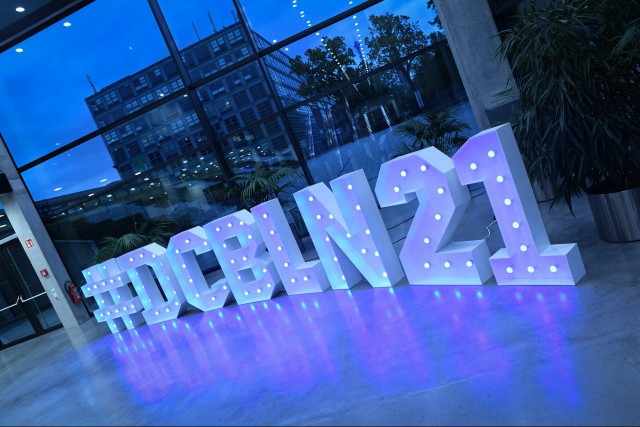In Germany, “Hessian” is one of the most common dialects you can hear in media. Germans hear it on the radio and TV all the time, out of the mouths of comedians such as Bodo Bach and Maddin Schneider, as well as comedic duos Badesalz and Mundstuhl. While all of these people are said to have “Hessian” accents, it’s unclear how much this way of speaking has to do with the historic Hessian spoken in the country. Let’s find out what’s really hiding behind the Hessian dialect.
Does Hessian Exist?
With Hessian literary greats including Goethe and the Brothers Grimm, we can assume that the Hessian way of speaking has left its mark on the German language. And, in fact, Goethe’s rhymes often rely on a Hessian pronunciation, such as when he rhymes schön with gehn, neigen or reichen, or versuchend with Tugend. Nevertheless, a tendency that continues to this day was already evident in Goethe’s time. The young Goethe was sent away from his parents to study in Leipzig. This was done not only because of the better opportunities for education, but also because in the 18th century, the Saxon way of speaking came across as sounding “more educated.” Goethe was meant to appropriate it. And although the Brothers Grimm were known not only as the fathers of the fairytale but also as linguists and dialect researchers, not a single one of their fairytales was originally printed in the Lower or North Hessian dialects.
The turn toward a standard language was not limited to the educated elite. By the 19th century — especially in the areas annexed by Prussia after 1866 — a Standard German was taught and spoken in schools. This educational practice goes hand in hand with both the decline and stigmatization of non-standard dialects in Germany. The Hessian dialect has indeed almost died out, especially in cities and other urban locales. As with all dialects, however, rural speakers and older generations use the dialect more frequently, and kept it from vanishing completely.
The vernacular spoken in modern-day Hesse is a Standard German colored by the dialect that developed in the second half of the 20th Century. The linguistic expression for this variation is neuhessischer Regiolekt, or “New Hessian Regiolect.” New Hessian is closer to standard written German than the Hessian dialect. Because of media coverage outside of Hesse, it’s often referred to as the “typical Hessian dialect.” As a nod to its cultural prevalence, it’s also called “TV Hessian.”
What Is “Traditional” Hessian?
Traditional Hessian refers to a group of dialects that are classified as Middle German based on phonetic characteristics. In particular, it is a West Central German dialect, or rather a Rhine-Franconian dialect. Hessian is related to (among other dialects) the East Franconian (which is thought of as “typical Franconian” dialect), as well as Luxembourgish.
Where Is Hessian Spoken?
For most dialects and languages, political boundaries are much more sharply drawn than social and linguistic ones. This means that the Hessian dialects are not strictly limited to the German state that gives it its name. Hessian is predominantly spoken in Hesse, but it’s also used regionally in Rhineland-Palatinate (Westerwald, Rheinhessen, Taunus), North Rhine-Westphalia (Wittgensteiner Land) and Bavaria (the Bavarian Lower Main).
What Does Hessian Sound Like?
German dialects are grouped according to phonetic characteristics. These characteristics are based on historical language changes. From the sixth to the eighth centuries CE, the so-called second sound shift (or the High German sound shift) took place in the German-speaking regions, in which the pronunciation of certain sounds systematically changed from the pronunciations in the south. The second sound shift primarily affected the consonants [p], [t] and [k].
This might sound a bit theoretical at first, but a few examples will make the second sound shift much clearer.
- [p] changed to [pf] or [f]. For example, the word [appel] started being pronounced as [Apfel] (“apple”), and [schip] became [Schiff] (“boat”).
- The consonant [t], meanwhile, shifted to [s] or [ts]. To this day, speakers in the North say [dat], [wat] and [Water] as before the sound shift, while Southern speakers say [was] (“what”), [das] (“that”), and [Wasser] (“water”).
- The [k]-sound shifted to the fricative [ch]; [ik] (“I”) became [ich] and [maken] (“to make”) became [machen].
The Hessian is subject to the second sound shift with respect to [t] to [s] and [k] to [ch]. However, the transfer of [p] to [pf]/[f] didn’t happen. As such, the Hessian dialect says [Appel] instead of [Apfel], just like in days gone by.
It is also very noticeable that no distinction is made between the voiced (“humming”) and unvoiced (“sharp”) [s] or [sch] sounds, nor is there one between [ch] and [sch]. All these sounds tend to be pronounced voiced, so that for example it is hard to hear a difference between [Kirche] (“church”) and [Kirsche] (“cherry”).
What’s The Most Important Hessian Word?
You can learn some Hessian vocabulary here. But we’ll give you the most important word as a sneak peek right now – although admittedly we, Babbel, may be a little biased in this respect: it’s babbele, which means “to speak.”











